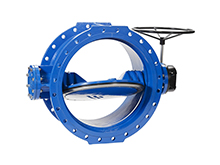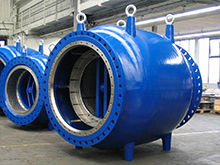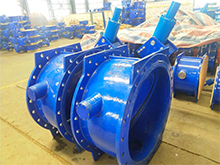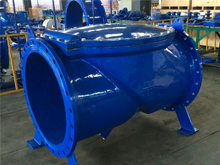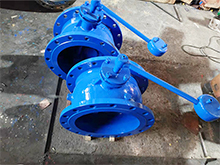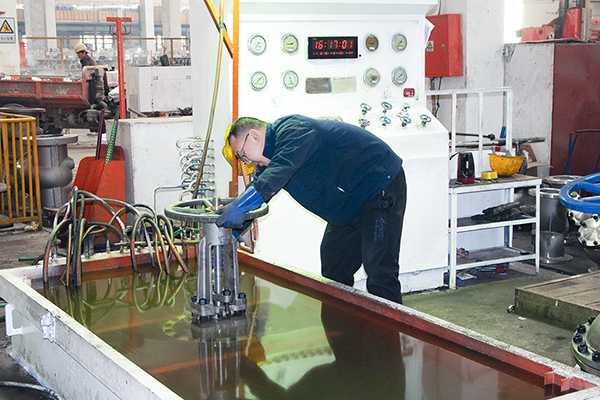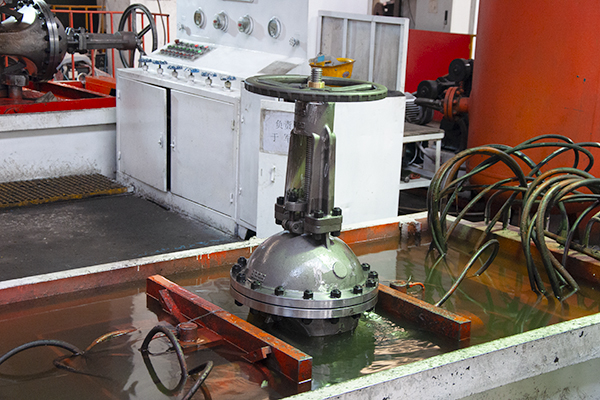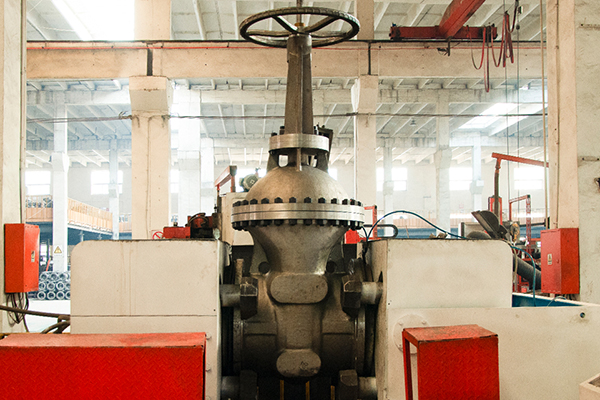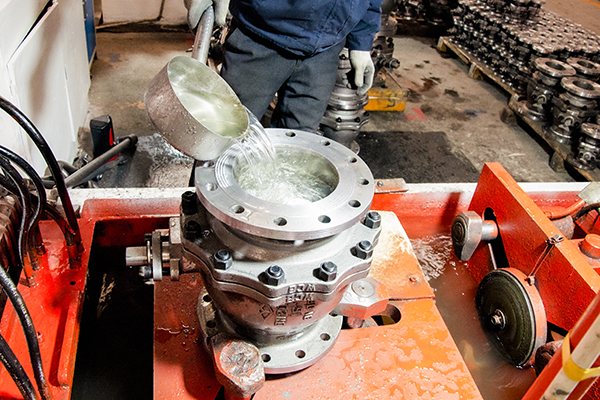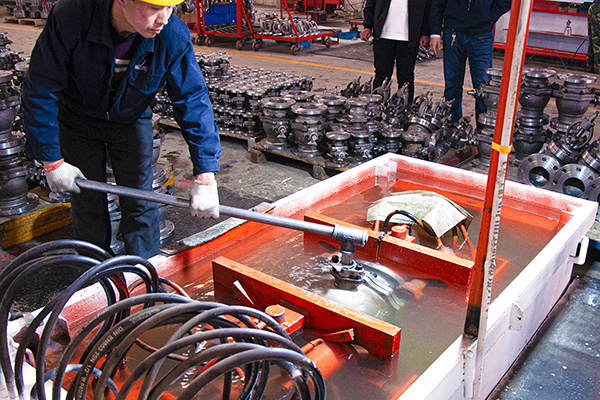- Gate valve
-
- DIN f4 di flange resilient epdm gate valveDN450-1200 Resilient Seated Gate ValveDIN F5 Non-rising stem Resilient gate valveDIN F5 Socket connection soft seal gate valveUnderground cap soft seal gate valveBS5163 Rising stem Resilient soft seal gate valveBrass Threaded Gate ValveHard seal gate valveAPI Slab Gate ValveStainless Steel Gate ValveStainless Steel Knife Gate ValvePneumatic gate valve Control valveSoft Seal Gate ValveExtension stem gate valveNon rising stem Groove Soft Sealing Gate ValveRising stem Forged steel gate valveAPI carbon steel gate valveThreaded Gate ValveDin rising Stem And Non-Rising Stem Gate ValveUL-FM Rising stem flanged fire fighting system gate valveANSI Cast Iron Gate ValveBritish Standard Soft-Sealing Gate Valve
- Butterfly valve
-
- DN2000 Double Eccentric Butterfly ValveFlange butterfly valveLug butterfly valveWafer Butterfly Valve With HandleWorm Gear Operated Wafer Butterfly ValveWafer lined fluorine butterfly valvestainless steel wafer butterfly valveStainless Steel Flanged Butterfly ValveEccentric soft sealing flange butterfly valveElectric three-eccentric metal hard seal butterfly valvePneumatic Flanged Butterfly ValvePneumatic Wafer Butterfly ValveThree eccentric metal seals wafer butterfly valveULC butterfly valve reportInflatable Butterfly ValveHigh Performance Butterfly ValveGrooved butterfly valvesElectric soft sealing wafer butterfly valveDouble flange fluorine lined butterfly valveHandle Aluminum Butterfly ValveWorm Gear Aluminum Butterfly ValveFull PTFE lined wafer butterfly valveOne stem no-pin wafer butterfly valveMulti standard Aluminum handle wafer butterfly valveMulti standard soft seat aluminum lever coated discwafer type butterfly valveResilient Seated Butterfly ValveMulti standard soft seat wafer type butterfly valveWafer PTFE seat butterfly valveWorm Gear Operated Lug Butterfly ValveStainless Steel wafer Butterfly ValvePneumatic Wafer Butterfly ValveWafer Type Metal Seat Butterfly ValveLug type manual wafer butterfly valve without pinAluminium Handle Lug Butterfly ValveWorm Gear Operated Flange Butterfly ValveLever Operated Flange Butterfly ValveButterfly valve stemButterfly valve discButterfly valve seat
- Ball valve
-
- High platform flange ball valveCast Iron Ball ValveSS Thread Ball ValvesThree Piece Type Ball ValveAPI Ball ValveStainless Steel 3PC Ball ValvePTFE Seat Flanged Ball ValveForge Steel Fully Welded Ball ValveMetal Seat Ball Valvesfixed ball valveFlange connection ball valve3PC Type Ball Valve With Internal Thread Q11F/H-1000WOGThree Way Ball ValveANSI API Cast Steel And Stainless Steel Flange Ball valveTwo-PCS Type Thread Ball Valve
- Globe Valve
-
- API Carbon Steel Globe ValveBellows Globe ValveStainless steel flange globe valveStainless steel thread S type globe valveStainless steel thread B type globe valveCast Steel Globe ValvePiston Globe ValveWCB Carbon Steel Globe Check Valveelectric motorized control stainless steel SS316 globe valveBrass Globe ValveCryogenic Globe valveHT200 Globe ValveThreaded Stainless Steel Globe ValveGG25 Globe ValveANSI API Cast Steel And Stainless Steel Globe valve
- Check valve
-
- DN800 Slow Closing Check ValveDN800 Rubber Disc Check ValveButterfly Buffering Check Valvecheck valve with counter weightSilent Check ValveStainless Steel flange Check ValveSwing Check ValveSingle Chip Check Valve H74WStainless Steel Wafer Check ValveSwing Start Check ValveFoot check valveAPI Swing Check ValveWCB Swing Check ValveCheck ValveLifting Check ValveBottom ValveHammer Diminish Noises Check ValveWafer Check ValveDuctile Iron Check Valve
- Water Meter
-
- Vertical Type Water MetersStainless steel threaded water meterPiston water meterPlastic water meterMore flow rotor dry water meterspiral vane flange water meterCI wotlman water meter with pulse outputLXCLG(R) Vertical removable element woltman cold (hot) water meterSingle flow rotor dry water meterPrepaid Token Water MeterElectromagnetic flowmeterRotary Piston Liquid Sealed Water MeterRotary Piston Liquid Sealed Water Meter
- Air valve
-
- Double ball exhaust valveDoubleair Air Valve SaudiDoubleair Air Valve Southeast AsiaDoubleair Air Valve South AmericaDouble Air ValveThreaded Air ValveSingle Air ValveTriple Functions Air ValveAutomatic Air Release ValveAutomatic release valveAutomatic exhaust valveComposite Exhaust Air ValveBrass exhaust valveDouble Ball Air Valve
- Pipe Repair & Coupling
-
- Flexible Multi-Function Pipe Coupling ZFJ-SSS Semi-Circle Pipe Repair Clamp SJW-HDuctile Iron Band Repair ClampStainless Steel Band Repair ClampDouble-Section Pipe Repair CouplingFolding Type Pipe RepairSingle-Section Multi-Function Pipe Coupling MF-SGear-Ring Type Multi-Function Pipe Coupling GR-SZBW Damping Corrugated Hose
- Dismantling Joint
-
- VSSJAFC(CC2F) Detachable Flange Transmission JointVSSJA-2(B2F) Double Flange Limited Expansion JointVSSJA-1(BF) Single Flange Limited Expansion JointVSSJA(AF) Flange Loose Expansion JointJGD-B Threaded Rubber JointZBW Damping Corrugated HoseKXT-S Flexible Dual-Spherical Rubber JointKXT Rubber Soft JointFlange Adaptor
What is the method of pressure test for the valve?
2020-05-26
The media of water, oil, air, steam, nitrogen, etc is widely used for pressure test . and the methods for various valves are as follows.
(1)Strength test of shut-off valve and throttle valve
Usually put the assembled valve in the pressure test frame, open the valve flap, inject the medium to the specified value, check whether the valve body and valve cover Sweat and leakage. The strength test can also be carried out in a single piece. The tightness test only works for globe valves. During the test, the valve stem of the stop valve is in a vertical state, the valve flap is opened, the medium is introduced from the bottom end of the valve flap to the specified value, and the packing and gasket are checked; after the valve is qualified, the valve flap is closed and the other end is opened to check for leakage. If the valve strength and sealing test are to be done, the strength test can be done first, and then the pressure is reduced to the specified value of the sealing test, check the packing and gasket; then close the valve flap, open the outlet end to check whether the sealing surface is leaking.
(2) Gate valve
The strength test of gate valve is the same as that of globe valve.
There are two methods for gate valve leak test.
① The gate is opened, so that the pressure in the valve rises to the specified value; then close the gate, immediately remove the gate valve, check whether there is leakage at the seals on both sides of the gate or directly inject the test medium into the plug on the valve cover to the specified value , Check the seals on both sides of the gate. The above method is called intermediate pressure test. This method should not be used for sealing tests on gate valves with a nominal diameter of DN32mm or less.
② Another method is to open the gate to increase the test pressure of the valve to the specified value; then close the gate and open the blind plate at one end to check whether the sealing surface is leaking. Then turn around and repeat the above test until it is qualified.
The tightness test at the gate valve packing and gasket should be carried out before the tightness test of the gate.
(3) Ball valve
The strength test of the ball valve should be conducted with the ball half open.
① Floating ball valve tightness test: put the valve in a half-open state, introduce test medium at one end, and close the other end; turn the ball several times, open the closed end to check when the valve is closed, and check the sealing performance of the packing and gasket, There must be no leakage.
② Fixed ball valve tightness test: Before the test, the ball is turned several times without load, the valve is closed, and the test medium is drawn from one end to the specified value; use a pressure gauge to check the sealing performance of the introduction end, and the accuracy of the pressure gauge is 0.5 ~ Grade 1, the measuring range is 1.6 times the test pressure. Within the specified time, if there is no depressurization, it is qualified; then introduce the test medium from the other end and repeat the above test.
Then, the valve is in a half-open state, both ends are closed, the inner cavity is filled with medium, and the packing and gasket are checked under the test pressure, and there must be no leakage.
③ The three-way ball valve should be tested for tightness at various positions.
(4) Plug Valve
① During the strength test of the plug valve, the medium is introduced from one end, the rest of the passage is closed, and the plug is rotated to each fully open working position for testing. The valve body is not found to be qualified.
② During the tightness test, the straight-through cock should keep the pressure in the cavity equal to the passage, rotate the plug to the closed position, check from the other end, then rotate the plug 180 ° to repeat the above test; three-way or four-way cock valve The pressure in the cavity and one end of the passage should be kept equal, and the plug should be rotated to the closed position in sequence, the pressure is introduced from the right angle end, and the other end is checked at the same time.
Before the plug valve test, it is allowed to apply a layer of non-acid dilute lubricating oil to the sealing surface. No leakage or enlarged water droplets are found within the specified time. The test time of the plug valve can be shorter, generally according to the nominal diameter of l ~ 3min.
Gas plug valves should be tested for air tightness at 1.25 times the working pressure.
(5) Butterfly valve
The strength test of butterfly valve is the same as that of globe valve.
The sealing performance test of the butterfly valve should introduce the test medium from the media flow end, the butterfly plate should be opened, the other end is closed, and the injection pressure is to the specified value; after checking the packing and other seals for leakage, close the butterfly plate, open the other end, check the butterfly No leakage at the board seal is qualified. As a butterfly valve for adjusting the flow rate, the sealing performance test is not required.
(6) Diaphragm valve
Diaphragm valve strength test introduces medium from either end, opens the valve flap, and closes the other end. After the test pressure rises to the specified value, it is qualified to see that the valve body and valve cover are not leaking. Then reduce the pressure to the tightness test pressure, close the valve flap, open the other end to check, no leakage is qualified.
(7) Check valve
The check valve test state: the valve axis of the lift check valve is in a vertical position with the horizontal; the channel axis of the swing check valve and the valve axis are in a position approximately parallel to the horizontal line.
During the strength test, the test medium is introduced from the inlet end to the specified value, the other end is closed, and it is qualified to see that the valve body and bonnet have no leakage.
Sealing test introduces the test medium from the outlet end. At the inlet end, the sealing surface is checked, and no leakage at the packing and gasket is qualified.
(8) Safety valve
① The strength test of the safety valve is the same as that of other valves. It is tested with water. When testing the lower part of the valve body, the pressure is introduced from the inlet I = I end and the sealing surface is closed; when testing the upper part of the valve body and the valve cover, the pressure is introduced from the outlet El end and the other end is closed. The valve body and bonnet have no leakage within the specified time.
② Sealing test and constant pressure test, the general media used are: valves for steam use saturated steam as the test medium; valves for ammonia or other gases use air as the test medium; valves for water and other non-corrosive liquids use water as the test medium . For safety valves in some important positions, nitrogen is commonly used as the test medium.
The sealing test is conducted with the nominal pressure value as the test pressure, the number of times is not less than twice, and no leakage within the specified time is qualified. There are two methods of leak detection: one is to seal the connection points of the safety valve, and use grease to seal the thin paper on the El flange. The thin paper bulges as a leak, and the bulge is not qualified; the second is to use butter to thin The plastic plate or other plate seal is attached to the lower part of the outlet flange, and the valve flap is sealed by irrigation, and it is qualified to check that there is no bubbling in the water.
The number of safety valve constant pressure and reseating pressure tests is not less than 3 times, and compliance with the regulations is qualified.
For various performance tests of safety valves, see GB / T 12242-1989 ((Safety Valve Performance Test Methods).
(9) Pressure reducing valve
① The strength test of the pressure reducing valve is generally assembled after a single piece test, and can also be tested after assembly. Strength test duration: DN <50mm 1min; DN65 ~ 150mm greater than 2min; DN> 150mm greater than 3min.
②After the bellows and components are welded, 1.5 times the highest pressure after the valve is applied, and the strength test is performed with air.
③The sealing medium is tested according to the actual working medium. When testing with air or water, conduct the test at 1.1 times the nominal pressure; when using the steam test, perform at the maximum allowable working pressure at the operating temperature. The difference between the inlet pressure and the outlet pressure is required to be not less than 0.2MPa. The test method is: after the inlet pressure is adjusted, gradually adjust the adjusting screw of the valve, so that the outlet pressure can be sensitively and continuously changed within the maximum and minimum range, and there must be no stagnation or jamming. For the steam pressure reducing valve, when the inlet pressure is adjusted away, the valve is closed and the valve is shut off. The outlet pressure is the highest and the lowest value. Within 2 minutes, the increase in the outlet pressure should meet the requirements in Table 4.176-22. The volume meets the requirements in Table 4.18 to be qualified; for water and air pressure reducing valves, when the inlet pressure is set and the outlet pressure is zero, the pressure reducing valve is closed to conduct a leak test, and no leakage within 2 minutes is qualified.
For more information, please visit us at www.hawsd.com.
(1)Strength test of shut-off valve and throttle valve
Usually put the assembled valve in the pressure test frame, open the valve flap, inject the medium to the specified value, check whether the valve body and valve cover Sweat and leakage. The strength test can also be carried out in a single piece. The tightness test only works for globe valves. During the test, the valve stem of the stop valve is in a vertical state, the valve flap is opened, the medium is introduced from the bottom end of the valve flap to the specified value, and the packing and gasket are checked; after the valve is qualified, the valve flap is closed and the other end is opened to check for leakage. If the valve strength and sealing test are to be done, the strength test can be done first, and then the pressure is reduced to the specified value of the sealing test, check the packing and gasket; then close the valve flap, open the outlet end to check whether the sealing surface is leaking.
(2) Gate valve
The strength test of gate valve is the same as that of globe valve.
There are two methods for gate valve leak test.
① The gate is opened, so that the pressure in the valve rises to the specified value; then close the gate, immediately remove the gate valve, check whether there is leakage at the seals on both sides of the gate or directly inject the test medium into the plug on the valve cover to the specified value , Check the seals on both sides of the gate. The above method is called intermediate pressure test. This method should not be used for sealing tests on gate valves with a nominal diameter of DN32mm or less.
② Another method is to open the gate to increase the test pressure of the valve to the specified value; then close the gate and open the blind plate at one end to check whether the sealing surface is leaking. Then turn around and repeat the above test until it is qualified.
The tightness test at the gate valve packing and gasket should be carried out before the tightness test of the gate.
(3) Ball valve
The strength test of the ball valve should be conducted with the ball half open.
① Floating ball valve tightness test: put the valve in a half-open state, introduce test medium at one end, and close the other end; turn the ball several times, open the closed end to check when the valve is closed, and check the sealing performance of the packing and gasket, There must be no leakage.
② Fixed ball valve tightness test: Before the test, the ball is turned several times without load, the valve is closed, and the test medium is drawn from one end to the specified value; use a pressure gauge to check the sealing performance of the introduction end, and the accuracy of the pressure gauge is 0.5 ~ Grade 1, the measuring range is 1.6 times the test pressure. Within the specified time, if there is no depressurization, it is qualified; then introduce the test medium from the other end and repeat the above test.
Then, the valve is in a half-open state, both ends are closed, the inner cavity is filled with medium, and the packing and gasket are checked under the test pressure, and there must be no leakage.
③ The three-way ball valve should be tested for tightness at various positions.
(4) Plug Valve
① During the strength test of the plug valve, the medium is introduced from one end, the rest of the passage is closed, and the plug is rotated to each fully open working position for testing. The valve body is not found to be qualified.
② During the tightness test, the straight-through cock should keep the pressure in the cavity equal to the passage, rotate the plug to the closed position, check from the other end, then rotate the plug 180 ° to repeat the above test; three-way or four-way cock valve The pressure in the cavity and one end of the passage should be kept equal, and the plug should be rotated to the closed position in sequence, the pressure is introduced from the right angle end, and the other end is checked at the same time.
Before the plug valve test, it is allowed to apply a layer of non-acid dilute lubricating oil to the sealing surface. No leakage or enlarged water droplets are found within the specified time. The test time of the plug valve can be shorter, generally according to the nominal diameter of l ~ 3min.
Gas plug valves should be tested for air tightness at 1.25 times the working pressure.
(5) Butterfly valve
The strength test of butterfly valve is the same as that of globe valve.
The sealing performance test of the butterfly valve should introduce the test medium from the media flow end, the butterfly plate should be opened, the other end is closed, and the injection pressure is to the specified value; after checking the packing and other seals for leakage, close the butterfly plate, open the other end, check the butterfly No leakage at the board seal is qualified. As a butterfly valve for adjusting the flow rate, the sealing performance test is not required.
(6) Diaphragm valve
Diaphragm valve strength test introduces medium from either end, opens the valve flap, and closes the other end. After the test pressure rises to the specified value, it is qualified to see that the valve body and valve cover are not leaking. Then reduce the pressure to the tightness test pressure, close the valve flap, open the other end to check, no leakage is qualified.
(7) Check valve
The check valve test state: the valve axis of the lift check valve is in a vertical position with the horizontal; the channel axis of the swing check valve and the valve axis are in a position approximately parallel to the horizontal line.
During the strength test, the test medium is introduced from the inlet end to the specified value, the other end is closed, and it is qualified to see that the valve body and bonnet have no leakage.
Sealing test introduces the test medium from the outlet end. At the inlet end, the sealing surface is checked, and no leakage at the packing and gasket is qualified.
(8) Safety valve
① The strength test of the safety valve is the same as that of other valves. It is tested with water. When testing the lower part of the valve body, the pressure is introduced from the inlet I = I end and the sealing surface is closed; when testing the upper part of the valve body and the valve cover, the pressure is introduced from the outlet El end and the other end is closed. The valve body and bonnet have no leakage within the specified time.
② Sealing test and constant pressure test, the general media used are: valves for steam use saturated steam as the test medium; valves for ammonia or other gases use air as the test medium; valves for water and other non-corrosive liquids use water as the test medium . For safety valves in some important positions, nitrogen is commonly used as the test medium.
The sealing test is conducted with the nominal pressure value as the test pressure, the number of times is not less than twice, and no leakage within the specified time is qualified. There are two methods of leak detection: one is to seal the connection points of the safety valve, and use grease to seal the thin paper on the El flange. The thin paper bulges as a leak, and the bulge is not qualified; the second is to use butter to thin The plastic plate or other plate seal is attached to the lower part of the outlet flange, and the valve flap is sealed by irrigation, and it is qualified to check that there is no bubbling in the water.
The number of safety valve constant pressure and reseating pressure tests is not less than 3 times, and compliance with the regulations is qualified.
For various performance tests of safety valves, see GB / T 12242-1989 ((Safety Valve Performance Test Methods).
(9) Pressure reducing valve
① The strength test of the pressure reducing valve is generally assembled after a single piece test, and can also be tested after assembly. Strength test duration: DN <50mm 1min; DN65 ~ 150mm greater than 2min; DN> 150mm greater than 3min.
②After the bellows and components are welded, 1.5 times the highest pressure after the valve is applied, and the strength test is performed with air.
③The sealing medium is tested according to the actual working medium. When testing with air or water, conduct the test at 1.1 times the nominal pressure; when using the steam test, perform at the maximum allowable working pressure at the operating temperature. The difference between the inlet pressure and the outlet pressure is required to be not less than 0.2MPa. The test method is: after the inlet pressure is adjusted, gradually adjust the adjusting screw of the valve, so that the outlet pressure can be sensitively and continuously changed within the maximum and minimum range, and there must be no stagnation or jamming. For the steam pressure reducing valve, when the inlet pressure is adjusted away, the valve is closed and the valve is shut off. The outlet pressure is the highest and the lowest value. Within 2 minutes, the increase in the outlet pressure should meet the requirements in Table 4.176-22. The volume meets the requirements in Table 4.18 to be qualified; for water and air pressure reducing valves, when the inlet pressure is set and the outlet pressure is zero, the pressure reducing valve is closed to conduct a leak test, and no leakage within 2 minutes is qualified.
For more information, please visit us at www.hawsd.com.


